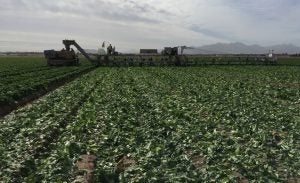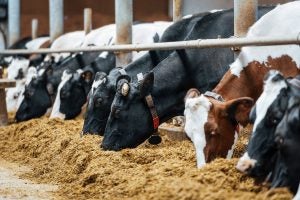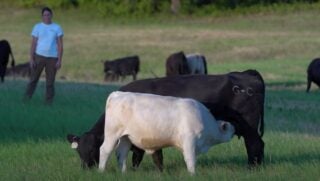A consumer trend that we’re seeing everywhere in the media and pop culture revolves around purchasing environmentally friendly and sustainable food. Often, however, consumers searching for those products don’t realize that most food in the United States fits the criteria.
Today many are sharing their recycling stories as part of #AmericaRecyclesDay, and agriculture’s should be among them.
According to the EPA, among the environmental benefits of recycling are conserving natural resources such as timber, water, and minerals, preventing pollution, and reducing the amount of waste sent to landfills. There are numerous agricultural practices utilized daily that accomplish the same benefits.
“When I think about recycling and sustainability it doesn’t always mean reusing plastic,” said John Boelts, a farmer in Yuma, Arizona. “To me, it oftentimes means doing more with less and getting more efficient.”

On Boelts’ farm, they have revamped equipment to cover more ground using the same tractors and the same amount of time. He also rotates crops, so that certain nutrients are not depleted from the soil. This practice allows him to be more efficient with fertilizer use. Boelts likes to think of it as recycling nutrients.
In the Yuma region, Boelts and other farmers grow the majority of the vegetables consumed in the United States and Canada for five months out of the year. They do that all while conserving and recycling a precious natural resource, water.
“We look decades-long at water, and agriculture has been a phenomenal steward of that natural resource,” Boelts said. Because of agriculture’s focus on the environment and working with the best recycler, nature, water usage has decreased in many sectors.
The University of Arizona conducted a study that, found over the past 30 years, water usage has decreased by nearly 30 percent, while productivity has increased by almost 30 percent. This is accomplished through using hand-movable sprinkler pipes, using narrower beds, updating implements, and configuring plantings into smaller spaces.
Vegetables and crops are not the only sectors of the industry that are concerned about recycling though. The cattle industry has an amazing story to tell about reducing the amount of waste sent to landfills.
Instead of calling it recycling, you’ll hear it called upcycling, because cattle take items that cannot be used by others and instead use them to create a nutritious source of protein. Some consumers think that cattle are eating food that humans could eat, but the majority of the time that is not the case. According to Dr. Sara Place, senior director of sustainable beef production research at NCBA, in an interview with Successful Farming, only 11 percent of the average cow’s diet consists of grain. Even for “corn-fed” beef in America, corn is not the main ingredient. Grass makes up 82 percent of cattle diets, with much of that grass being grown on nonarable land, or land that could not be used for anything else. An additional 7 percent consists of byproducts.

Some of the byproducts cattle utilize are cottonseeds, cottonseed hulls, dried distiller grains, canola meal, beet pulp, carrot tops, and other items that would be thrown in a landfill if they did not end up in a cattle feed bunk. This helps reduce food- and factory-waste.
Cattle in feed yards use even more byproducts, with a recent study showing that 29 percent of cattle rations are byproducts, an increase from 18 percent in 2006.
“They [ruminants] take things in with little or no value and make higher-value product,” Place said. “A lot of the protein that they generate and a lot of the nutrients that we generate for the human food supply just literally don’t exist without them.”
No matter the sector, agriculture is dedicated to recycling water, nutrients, unused food items and more. The story of agriculture working to reduce, reuse and recycle is one that we should be proud to share on this #AmericaRecyclesDay
Michelle Bufkin is a freelance communication specialist whose goal is to help producers bridge the farm-to-plate knowledge gap that exists with consumers today. She uses her full-time position as the Membership and Communication Director at the Arkansas Cattlemen’s Association to interact with producers and work on building that connection.



